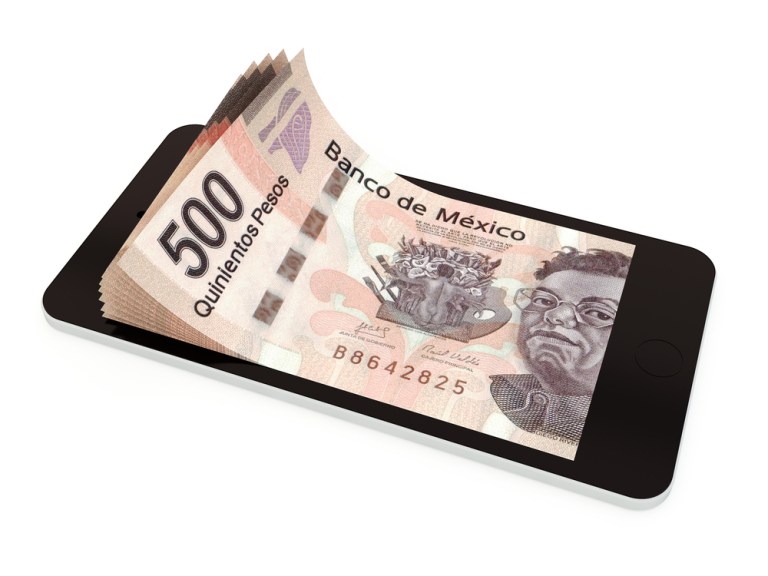
In countries like Mexico, where consumers generally distrust the financial services sector due to corruption in the traditional banking model, cash habits die hard.
There is a sense of confidence and trust that cash can offer that, at least in their experiences, digital and formalized banking cannot. Cash is a physical guarantee of value, tangibly present in their hands; electronic payments are an invisible promise that has been broken too many times to count.
Therefore, according to BillMo CEO Steve LaBella, a digital wallet cannot hope to appeal to these populations on the grounds of convenience, simplicity or lower cost. Although these are great qualities for an eWallet to have, the foundation of success must be built at a more fundamental level, he said.
“Our focus has always been building a brand that consumers will trust,” LaBella said. “As a new brand, you can’t advertise that; you can’t market trust. You have to build it; you have to get people to believe it, understand it and then talk about it with others.”
In a recent interview with Karen Webster, LaBella explained how the FinServ company went about laying that foundation of trust, and how it hopes to build upon it.
From the Ground Up
Before BillMo could offer users an eWallet, said LaBella, no matter how convenient, simple or cost-effective the product might have been, the company first had to offer them a community – so that’s where it started.
LaBella said it all began with a strong online presence, built around a blog and community forum. Posts focused on financial service topics relevant to the country’s unbanked, underbanked and millennial consumers, on how to budget and how to start putting funds away into savings.
While blog posts and videos offered education around BillMo’s own products and services, LaBella said it was just as important to help consumers understand adjacent products and services that could contribute to their financial wellness.
Even as the company gained market traction and scaled, said LaBella, it continued (and still continues today) to make this community a priority, interacting directly with community members to offer help and guidance and to ensure that they get the services they want and need.
What Goes Into Trust?
While the personal connections are definitely key, LaBella said there are other factors that go into building trust. First and foremost, any FinServ company doing business in Mexico faces an uphill battle to prove that it’s not too good to be true.
It’s not that consumers don’t want these services, said LaBella, and it’s not that they don’t understand how the technology works. They’re often just afraid to take another risk with their finances, even if the organization they’re dealing with sits outside the corruption of traditional models.
Once they’ve tried a product and seen that it works the way it was advertised, consumers tend to relax, LaBella said – and that’s when positive word of mouth can start to kick in. But how can a company get consumers to that point of trial?
The answer is simple and works the world over, said LaBella: Let them “try before they buy,” and then offer incentives for them to do so. People just need to see something work: Once they’ve experienced the instant gratification of real-time financial services – like peer-to-peer (P2P) transfers, bill pay or buying airtime – the product speaks for itself.
It’s just a matter of getting users through the door.
Another brick in the wall of consumer trust has been giving users plenty of options for getting money into and out of their eWallets, said LaBella. They need to know they can have access to their funds anytime they want.
BillMo lets customers take money out of their account for free, whenever they need it, and the company then absorbs the expense as a marketing cost. This demonstrates that it’s a real service and that the company puts its customers’ interests first, LaBella said.
What’s Next
Options will continue to be an important part of BillMo’s customer success strategy. LaBella said the company is weeks away from issuing more than 300,000 virtual debit cards to its customers so they can spend their wallet balance anywhere cards are accepted.
The company has also joined forces with Walmart, allowing customers to pay cash at local retail stores to load value into their eWallets. LaBella said there is definitely potential to grow that partnership.
Customers who load up their cards at Walmart could be further encouraged to spend in the store through targeted BillMo promotions, even driving those who are not in the store to make a visit to earn cash back.
Beyond that, LaBella said the company’s long-term road map is to partner with many different remittance companies to power different ways to add funds to customers’ virtual wallets. He said the means by which money ends up in someone’s wallet is not as important as getting more dollars flowing through the system.
LaBella believes the opportunity is still substantial in the remittance channel, even though BillMo does already have a remittance product that customers can use to move funds into a recipient’s wallet. Again, he emphasized, it’s all about giving people as many options as possible.
The Biggest Challenge (And Opportunity)
It’s not just Mexico: eWallets are seeing lukewarm adoption in other markets, as well, particularly North America. Perhaps eWallet developers in these markets could learn something from the BillMo/Walmart partnership, potentially growing their product into more than just a repository for funds and spending.
BillMo’s goal is to be used by its customers as a transactional service or an account-based relationship, not just a traditional eWallet. That is, BillMo doesn’t just want to facilitate spending, but also strives to enable other capabilities, such as bill pay, to increase the product’s stickiness.
The goal, LaBella said, is all about making the “wallet” even more valuable to drive dependencies, in Mexico and beyond.